Previously, we introduced how to create a logic analyzer and oscilloscope using RP2040. Today, we will build a logic analyzer using FPGA.
Currently, the mainstream architecture of logic analyzers in China is based on FPGA + USB PHY. The combination of the advantages of FPGA and the high accessibility of USB has kept it in the mid-to-high-end market.
Today, we will use FPGA to build a logic analyzer. For versatility, we chose serial communication with the host computer, which greatly increases portability.
Overall Architecture
This project consists of 7 modules to implement the functions of the logic analyzer: trigger controller, sampling rate counter, buffer, control module, and UART communication.
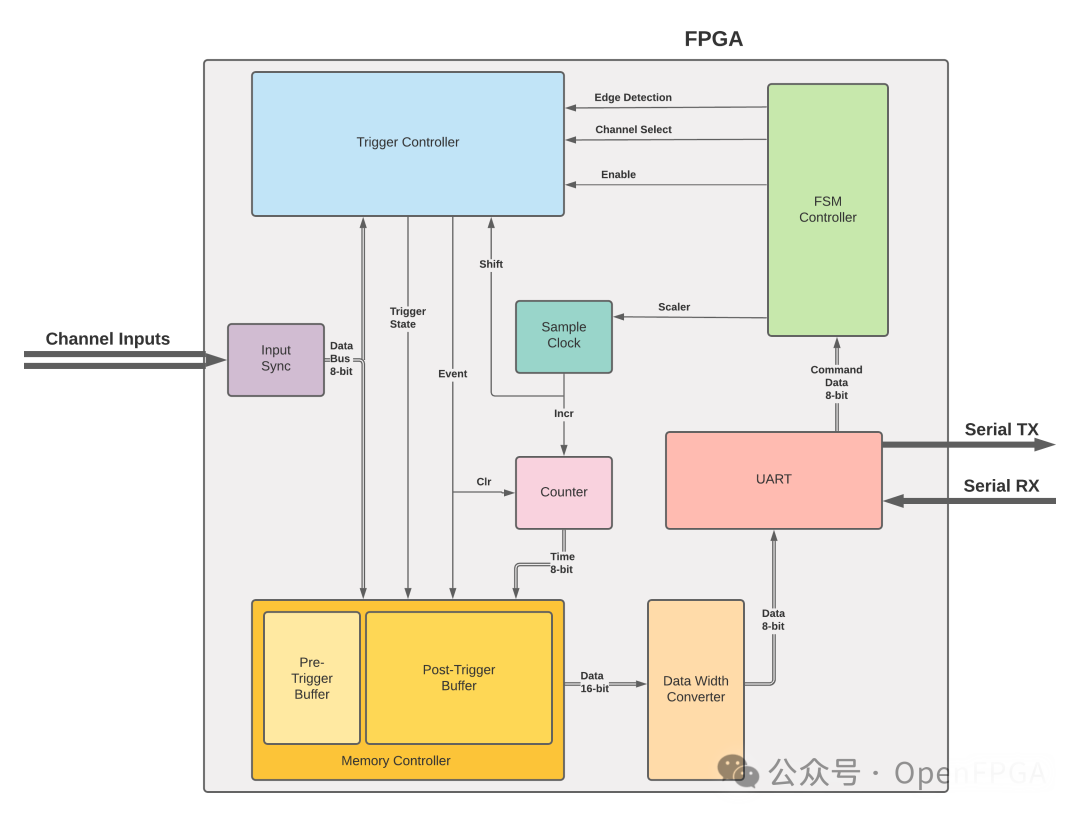
Trigger Controller
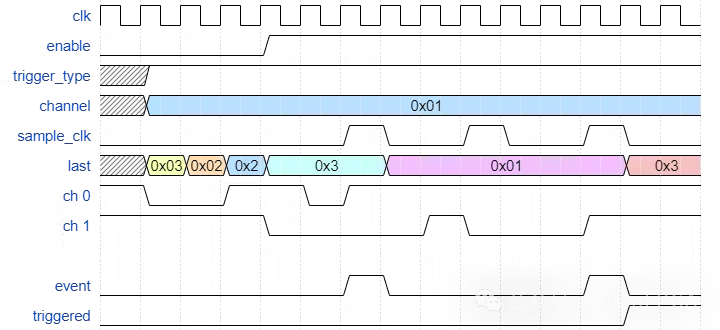
This module allows users to configure trigger conditions on the channels. The condition can be set via the GUI to be either a falling edge or a rising edge. The sampling rate signal is used to inform the trigger controller when to accept new input data. If the new data does not match the current data, a signal will be sent to other modules. Once the trigger condition matches, the trigger status signal will be sent to the buffer.
Sampling Rate Counter
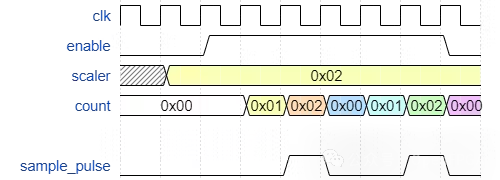
This system uses a 16-bit divisor to inform the logic analyzer what the sampling frequency should be. The sampling rate signal controls the frequency at which new data enters the trigger controller and the frequency at which the timestamp counter should increment. In the GUI, this divisor needs to be combined with the FPGA clock frequency to obtain timing information from the relative timestamp.
Timestamp Counter

The system uses an 8-bit register to count the number of sampling clock pulses. This register is connected to the input data and then saved to the buffer. The timestamp counter increments on each sampling clock, tracking the relative time between events. If an event occurs, the counter resets to 1 and resumes counting. If the counter overflows, it signals the memory controller to start a new entry in the buffer. The enable signal keeps the counter at 1 until capturing begins.
Buffer
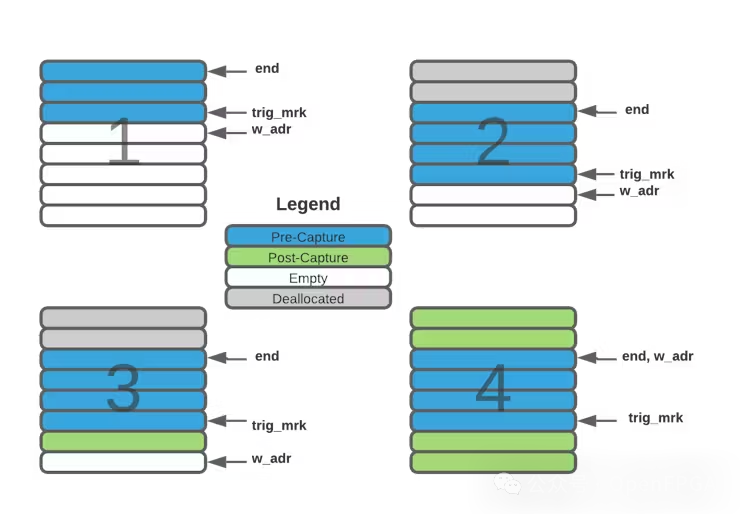
The buffer stores timestamps and data in RAM. New data begins recording in the buffer whenever an event or timestamp flip signal is received. Before the trigger condition occurs, this module acts as a circular buffer, continuously overwriting previous entries. The size of this circular buffer can be programmed in the GUI, occupying a proportion of the entire buffer from 10% to 90%. Once the trigger condition occurs, the buffer acts as a FIFO, filling the remaining memory. Once full, the control module receives a signal and reads data line by line.
UART Communication
This module simply waits for the host PC to send bytes and forwards commands to the control module.
GUI Usage
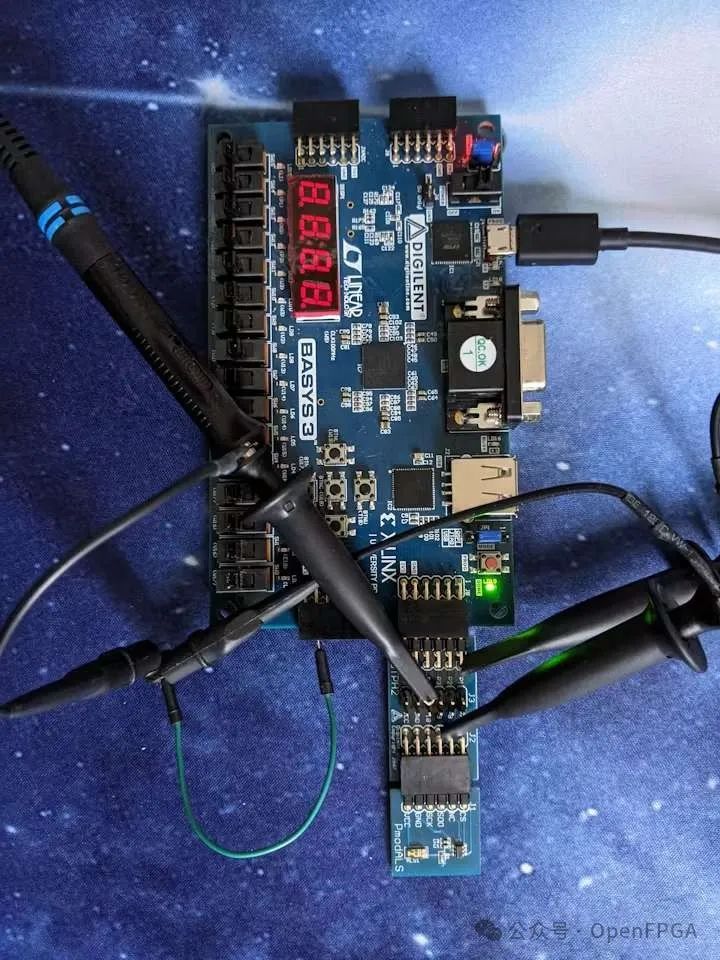
Main menu capture button
-
1: Select which channel to observe the trigger condition.
-
2: Set the trigger type to rising edge or falling edge.
-
3: Set the data ratio before the trigger event.
-
4: Set the sampling rate, the first number indicates the sampling interval rate, the next two numbers indicate the minimum and maximum recording time.
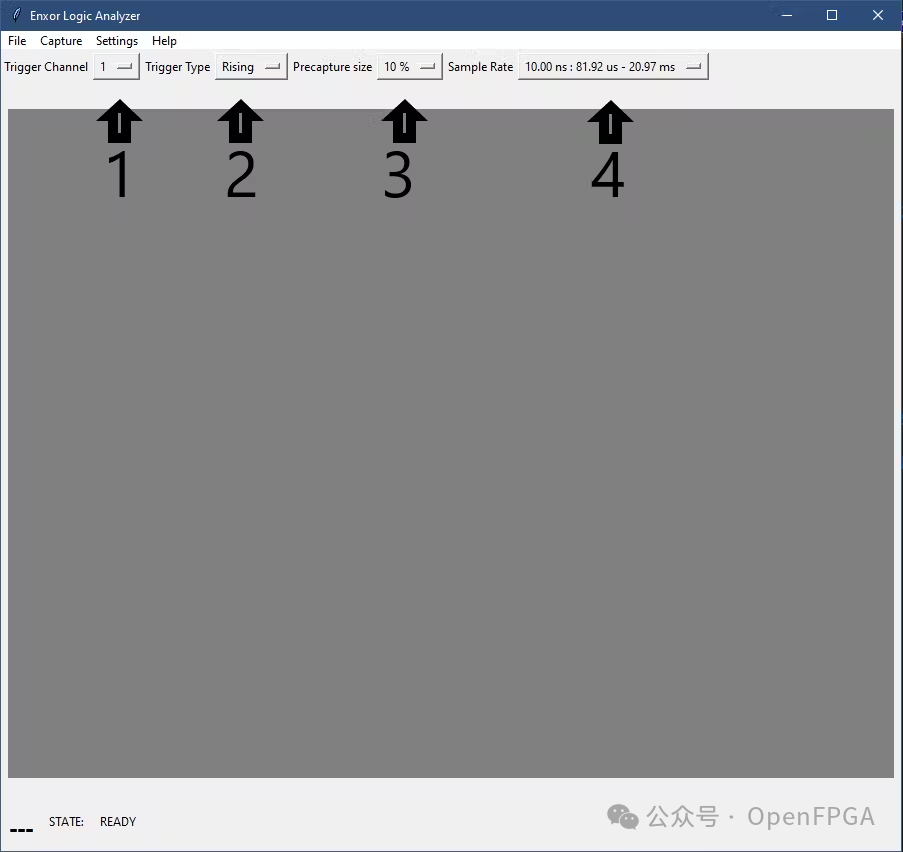
-
1: Channel name.
-
2: Indicates where the data comes from. If loaded from a file, set to the filename; if data comes directly from the logic analyzer, set to Enxor.
-
3: The red bar indicates where the trigger point occurs.
-
4: The position slider controls the x-axis. Click and drag the slider to move it to a new position.
-
5: Time interval measurement. Click on any point on the waveform, then click the second point to display the time between the two points.
-
6: The status of the logic analyzer. The READY state indicates that the logic analyzer is ready to start capturing. When the logic analyzer is enabled but not yet triggered, the status will be WAITING. After the trigger event, the status will be TRIGGERED. If capturing is stopped midway, the status will be STOPPED.
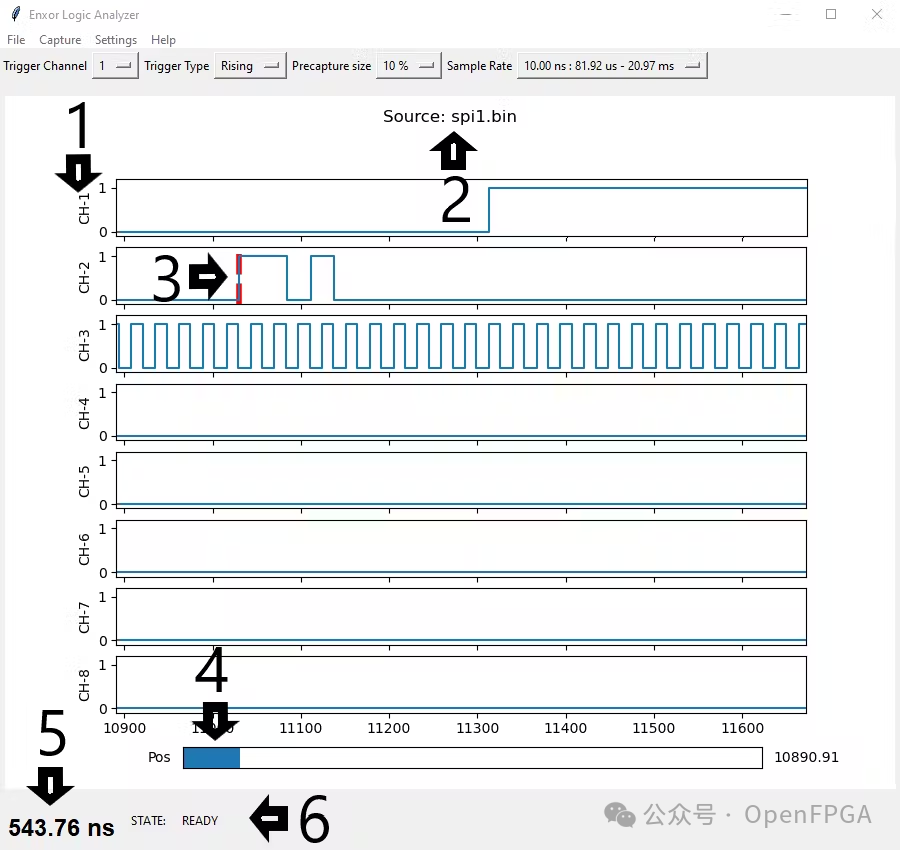
Screenshot during operation
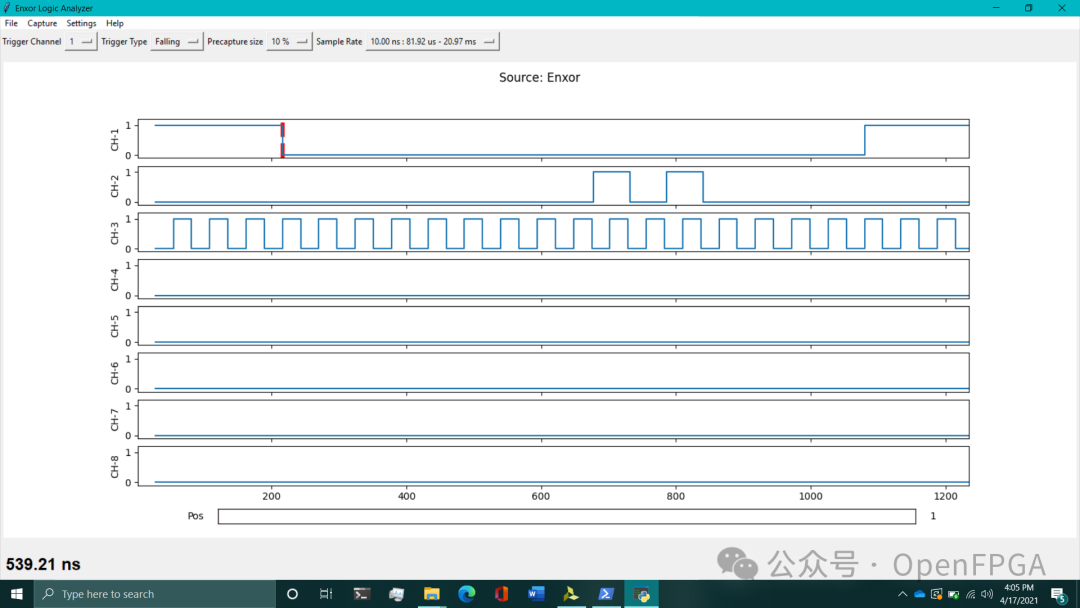
Project Link
https://github.com/lekgolo167/enxor-logic-analyzer
Conclusion
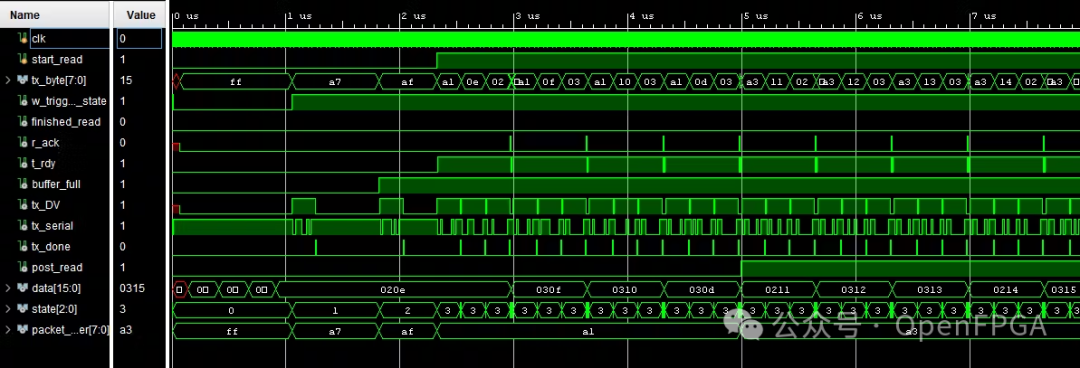
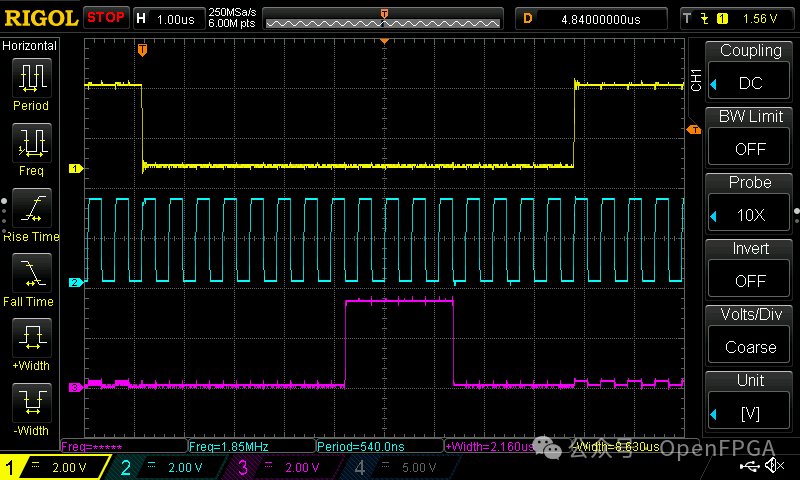
This project is suitable for those who want to learn about the architecture of logic analyzers. If you want to understand the logic analyzer based on USB PHY architecture, feel free to leave a message, and we will update it as soon as possible~